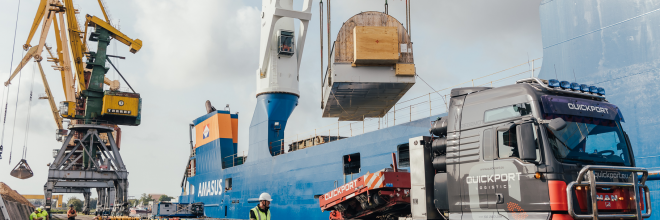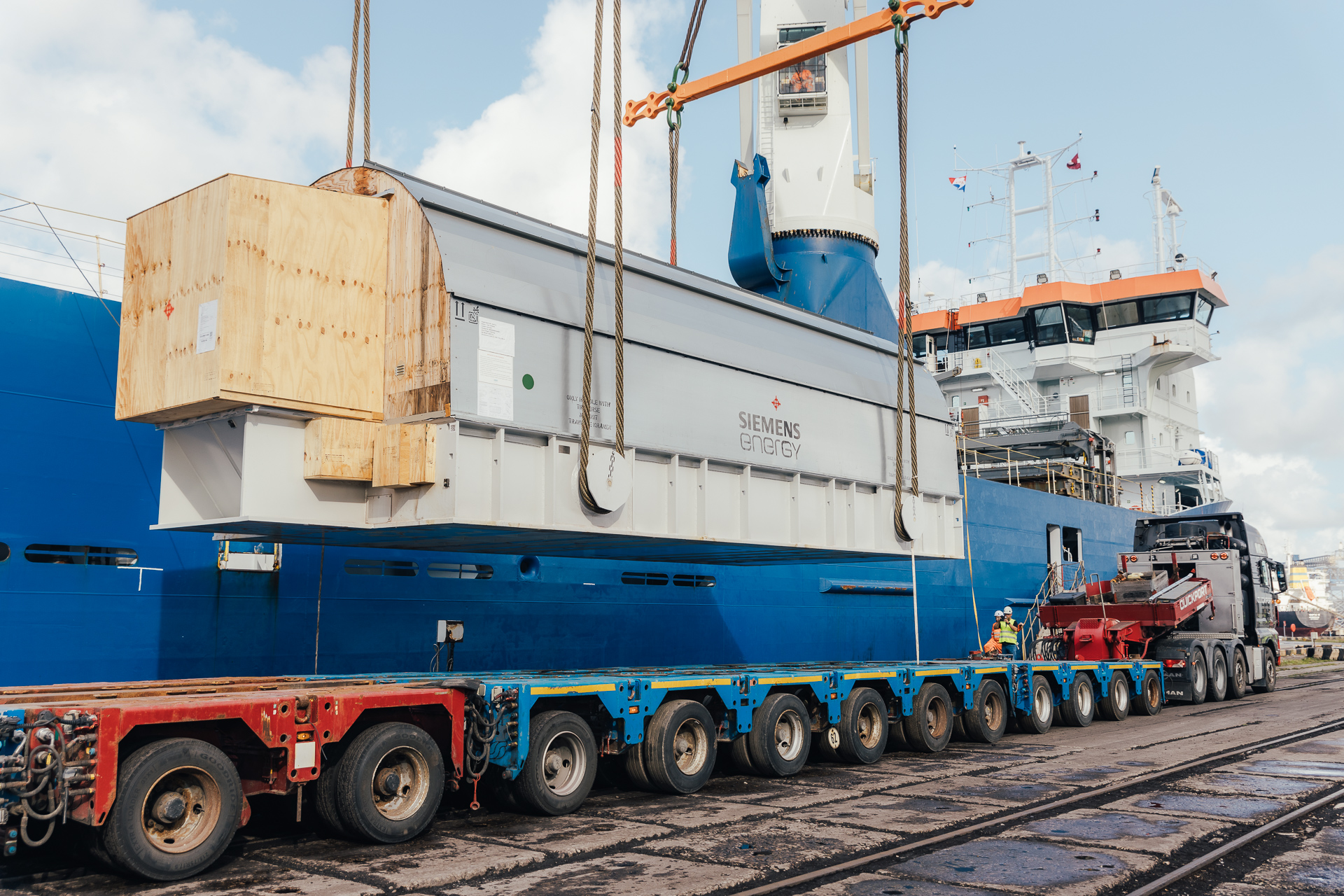
A significant shipment for the stability of the power system in Latvia comprising the second synchronous compensator, its flywheel, and associated components has arrived at the Freeport of Ventspils from Germany. The total weight of the cargo exceeds 390 tons. Manufactured by Siemens Energy at the request of AS ‘Augstsprieguma tīkls’ (AST), the equipment will ensure the stable operation of the electrical power network after its disconnection from the Russia-controlled system and synchronization with the European power system.
The vessel EEMSLIFT ELLEN carrying the special cargo arrived in Ventspils on Sunday. The cargo was unloaded at berth 10, rented by AS ‘Ventspils tirdzniecības osta’ (Ventspils Commercial Port), providing the terminal with valuable experience in handling oversized cargo.
By the end of the month, this crucial cargo will be transported to the AST substation in Ventspils, where a few weeks ago a topping-out ceremony was held for the new synchronous compensator station. In May, Latvia’s first synchronous compensator was installed in Grobiņa, and this week, the construction of a synchronous compensator station building will begin in Līksna, where the delivery of the third compensator equipment is expected by the end of the year. The total project investment amounts to 114 million euros, with 75% being co-financed by the Connecting Europe Facility (CEF).
The construction and connection of synchronous compensator stations to the transmission network is being carried out by AST in collaboration with the general partnership EM&SE Syncons, which consists of Germany’s Siemens Energy and Latvia’s SIA ‘Enersense’.
To ensure the necessary inertia for maintaining stable frequency in the power system and short-circuit power for relay protection operations and the safe connection of solar and wind power plants, synchronous compensators will be installed in Latvia, as well as in Lithuania and Estonia – three in each country. The construction of synchronous compensator stations is part of the reinforcement of the transmission system infrastructure, which is necessary for the implementation of the most ambitious energy independence project in the Baltics – synchronization with continental Europe. The synchronization project is in its final phase. In February 2025, the Baltic states will disconnect from the Russia-controlled power system and commence synchronized operation with the continental European network.
The synchronization of the Baltic grids with continental Europe will enhance the security of power supply in the region, while also promoting the development of the European internal energy market and creating new business opportunities. Additionally, the investments in equipment and technology made within the framework of the project are one of the prerequisites for safely connecting large-scale renewable energy sources to the transmission network and meeting the goals of the European Green Deal.

